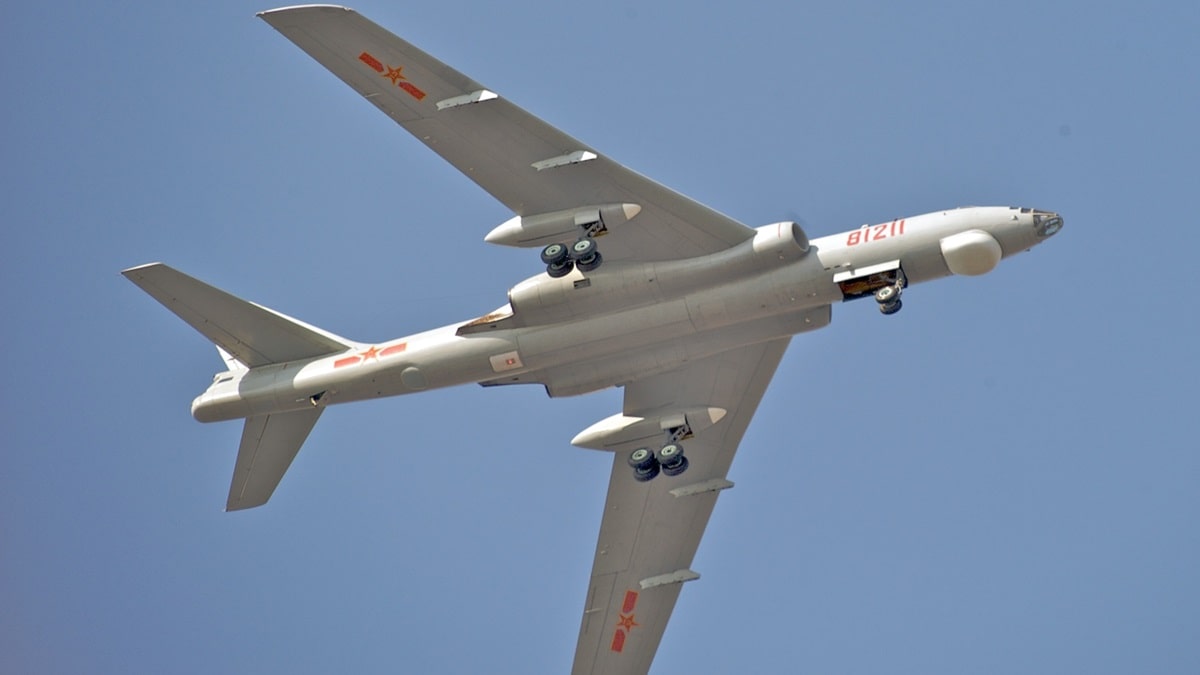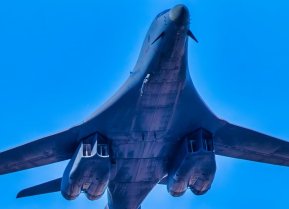China’s H-6 Bomber: An Oldie-But-a-Goodie (for China)
The H-6 bomber’s evolution to a modern strategic asset is a clear indication of China’s growing military prowess and its laser-like focus on modernizing its air force.
Many American defense experts believe that newer and expensive platforms are always superior to older models, notably those from the Cold War era that were built by the Soviet Union. Yet these Soviet-era systems often tend to be mass-producible, relatively cheap, reliable, and expendable in ways that many Western weapons platforms are not.
This explains, for example, why the Soviet-era Russian T-72 main battle tank (MBT) has dominated the killing fields of the Ukraine war as opposed to the more modern German-built Leopard-II MBTs or the American M1 Abrams MBTs.
The H-6 bomber, like the old T-72 MBT, is a relic from the Cold War era. But this old warbird has undergone a remarkable transformation, evolving into a formidable asset that has become the source of significant concern for U.S. defense planners (those same planners who think, for instance, it’s a wise move to retire the first tranche of F-22A Raptors because they’re “too old”). Initially designed as the Soviet Tupolev Tu-16, the H-6 was license-built by China, marking the beginning of its journey from a Cold War relic to Beijing’s airborne hammer.
A Brief History of the H-6 Bomber
The H-6 bomber made its maiden flight in the 1960s and has remained in active service since that time. Its longevity is a testament to the excellent design and engineering of this Cold War-era bomber. Some analysts have derided the H-6’s existence for being a testament to China’s inability to produce a replacement bomber.
Since it first built the H-6 bomber, China has designed multiple variants of the warbird. These variations include an aerial reconnaissance craft, upgraded aircraft, anti-ship aircraft, nuclear bombers, targeting data relay planes, as well as the H-6N, which has been in use since 2019.
The H-6 family includes the H-6K, H-6J, and H-6N and these planes have been key in China’s mission to signal to the region that it means business. These birds have been used by Beijing to conduct flights around Taiwan, near Japan, and throughout the South China Sea. They are a critical piece of China’s arsenal for flexing its muscles to the rest of the Indo-Pacific.
China’s H-6N, in particular, has aroused significant interest due to its potential to carry a large, air-launched hypersonic missile. China’s hypersonic weapons capability, by the way, is matched only by Russia’s—with America’s capacity lagging far behind the two Eurasian autocracies. China’s H-6N also has an in-flight refueling capability that drastically expands the operational range of the H-6N.
The Threat of the H-6 Bomber
The H-6 bomber’s evolution to a modern strategic asset is a clear indication of China’s growing military prowess and its laser-like focus on modernizing its air force. Per the Pentagon’s China Military Power Report, the H-6 bomber is the jet that most worries U.S. defense planners, highlighting the significant role it plays in China’s military strategy.

China is using updated older equipment, and it has a serious chance of defeating the U.S. military in a fight. This is a reality that has been allowed to occur only because the United States has been governed by an inefficient and outmoded defense bureaucracy as well as incompetent leaders.
Until a true revolution in military affairs occurs coupled with a real change in leadership in Washington, we will continue being outpaced by regimes that should never be able to challenge the U.S. military.

About the Author:
Brandon J. Weichert, a National Interest national security analyst, is a former Congressional staffer and geopolitical analyst who is a contributor at The Washington Times, the Asia Times, and The-Pipeline.
All images are Creative Commons.


